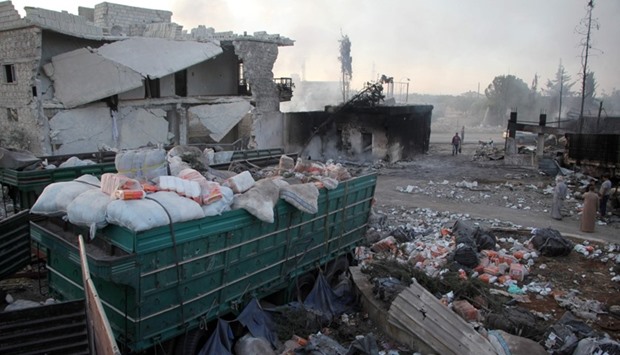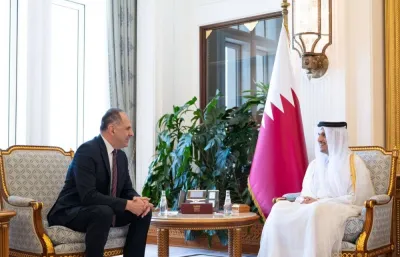* Satellite imagery analysis reveals air strike on UN convoy
* UNOSAT official later tones down remarks to say not definite
* US has blamed Russian planes for deadly strike, Moscow denies
Analysis of satellite imagery of a deadly attack on an aid convoy in Syria last month showed that it was an air strike, a UN expert said on Wednesday in remarks that were later toned down to say it was not a conclusive finding.
Some 20 people were killed in the attack on the UN and Syrian Arab Red Crescent convoy at Urem Al-Kubra near the northern city of Aleppo that also destroyed 18 of 31 trucks, a warehouse and clinic.
The United States blamed two Russian warplanes which it said were in the skies above the area at the time of the incident. Moscow denies this and says the convoy caught fire.
"We had an image of that and could clearly see the damage there. With our analysis we determined it was an air strike and I think multiple other sources have said that as well," Lars Bromley, research adviser at UNOSAT, told a news briefing.
"For air strikes, what you are usually looking out for is the size of the crater that is visible and the type of crater," he said. A giant crater was caused "almost certainly (by) air dropped munitions" as opposed to artillery or mortars, he said.
UNOSAT manager Einar Bjorgo, who took part in the briefing, contacted Reuters hours later to say it was not possible to be 100 percent. "There is significant damage, and we believe it may be air strikes, but it's not conclusive," he said.
"Our observations of the imagery show indications of it possibly being an air strike. But it's a very damaged area and we cannot definitely conclude that it's an air strike."
The United Nations has referred officially only to an "attack", which led to a brief suspension of its convoys in Syria. The International Federation of Red Cross and Red Crescent Societies initially referred to "air strikes" in a statement.
UN Secretary-General Ban Ki-moon said on Friday he would establish an internal UN board of inquiry to investigate the attack and urged all parties to fully cooperate.
UNOSAT (UN Operational Satellite Applications Programme), which reviews only commercially available satellite images, has not been asked to share its analysis with the UN investigators, but is prepared to do so, Bjorgo said.
"Our images are from time to time used in order to brief Security Council members," he said.
Bjorgo, speaking generally, said: "We are neutral. We don't have a political agenda, we simply state the facts."
UNOSAT has mapped Syria's conflict since it began in 2011, using satellite imagery to assess population movements and damage to civilian infrastructure. This enables UN agencies trying to deliver food and medical assistance to besieged areas to view roadblocks and checkpoints in real time.

Aid materials strewn across the floor in the town of Orum al-Kubra on the western outskirts of the northern Syrian city of Aleppo, the morning after a convoy delivering aid was hit by a deadly air strike on September 19, 2016. AFP


